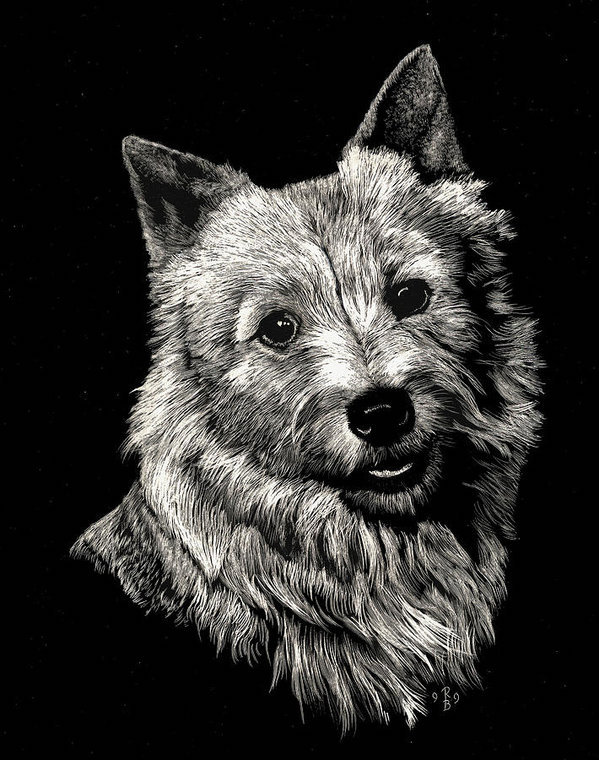
There is a part of England that juts into the North Sea, an area that gets its name from the East Angles, a tribe from northern Germany that settled in the Anglo-Saxon kingdom: East Anglia. Mostly flat with mild climate,the land gave rise to a farming community that relied on small terrier-type dogs to deal with vermin. It’s likely that these dogs were the ancestors of today’s Norwich Terrier.
In the 1880s, owning a small ratting terrier became not just fashionable among Cambridge University students, but a necessity because the colleges situated between Main Street and the River Cam had its share of problem rats. Most of the dogs were acquired from Charles Lawrence, a local dog dealer living in Cambridge, and because so many of the students lived on Trumpington Street, the dogs became known as “Trumpington Terriers.”
Later in the early part of the 20th century, Frank “Roughrider” Jones bred his dogs to “Rags,” a proficient working terrier from Norwich who would go on to become the founding sire of the Norwich Terrier. Jones and others crossed Rags’ offspring with those working terriers from Cambridge University and developed a sturdy and fearless dog that would be recognized in 1932 by The Kennel Club as the Norwich Terrier.
In those days, original Norwich Terriers had both the prick and drop ear, and mating the two together produced a version with an unattractive intermediate ear that was neither prick nor drop eared. In 1957, British Norwich breeders decided the two varieties should be treated as separate breeds and not judged as one, but the Kennel Club initially refused what it thought was a trivial distinction. In 1964, however, the Club came around and officially separated the Norfolk and the Norwich Terriers into two distinct breeds, the prick-eared dog retaining the name Norwich Terrier, and the drop-eared dog being renamed the Norfolk Terrier.
The Canadian Kennel Club officially recognized the two as separate breeds in 1977, and the AKC followed suit in 1979. The Norwich Terrier Club of America was renamed the Norwich and Norfolk Terrier Club of America, but in 2007, the club’s membership voted to have separate breed clubs for the Norwich and the Norfolk Terrier.
Norwich Terrier by Rachel Hames is available as a print, poster, towel, tote bag and many other options here.

In October of this year I lost my first Norwich Terrier, Murphy Brown was 14 Years old. Once you own a Norwich Terrier you will never want another breed. In November I purchased my 2nd Norwich, a little boy this time. For years I said the next Norwich would be Buster Brown, as my last name is Brown. Buster Brown has been nicknamed Buzzy or Buzzer, whichever comes easily off the tongue. Today when I read your story about Trumpinhton Terriers and one of the first Sires named “Rags”. I think I may have to change his nickname to “Rags”.
Thank you for sharing this informative and interesting story of these adorable puppies.
I very happy Norwich owner.
We’re so sorry for your loss, Jerrilyn. They never live long enough, ever. Having grown up with terriers, we have a sense of what you mean about them, they are absolutely unique creatures. That said, welcome to “Buzzy!” We thank you for taking the time to leave a comment, we do so love hearing from readers!